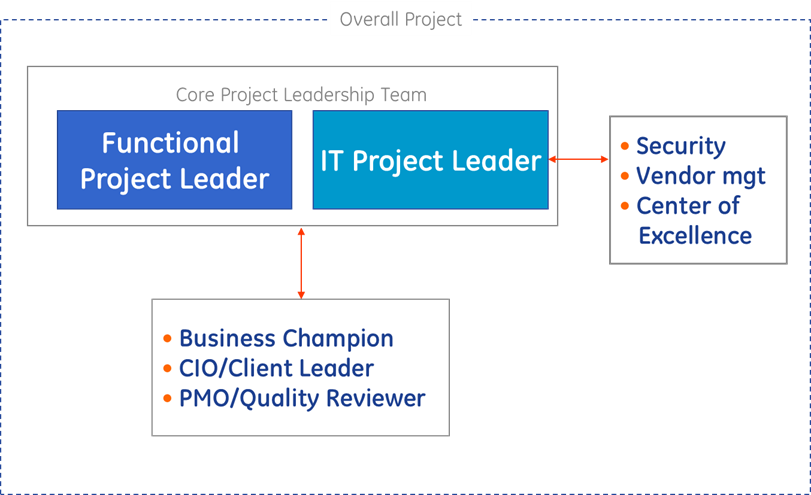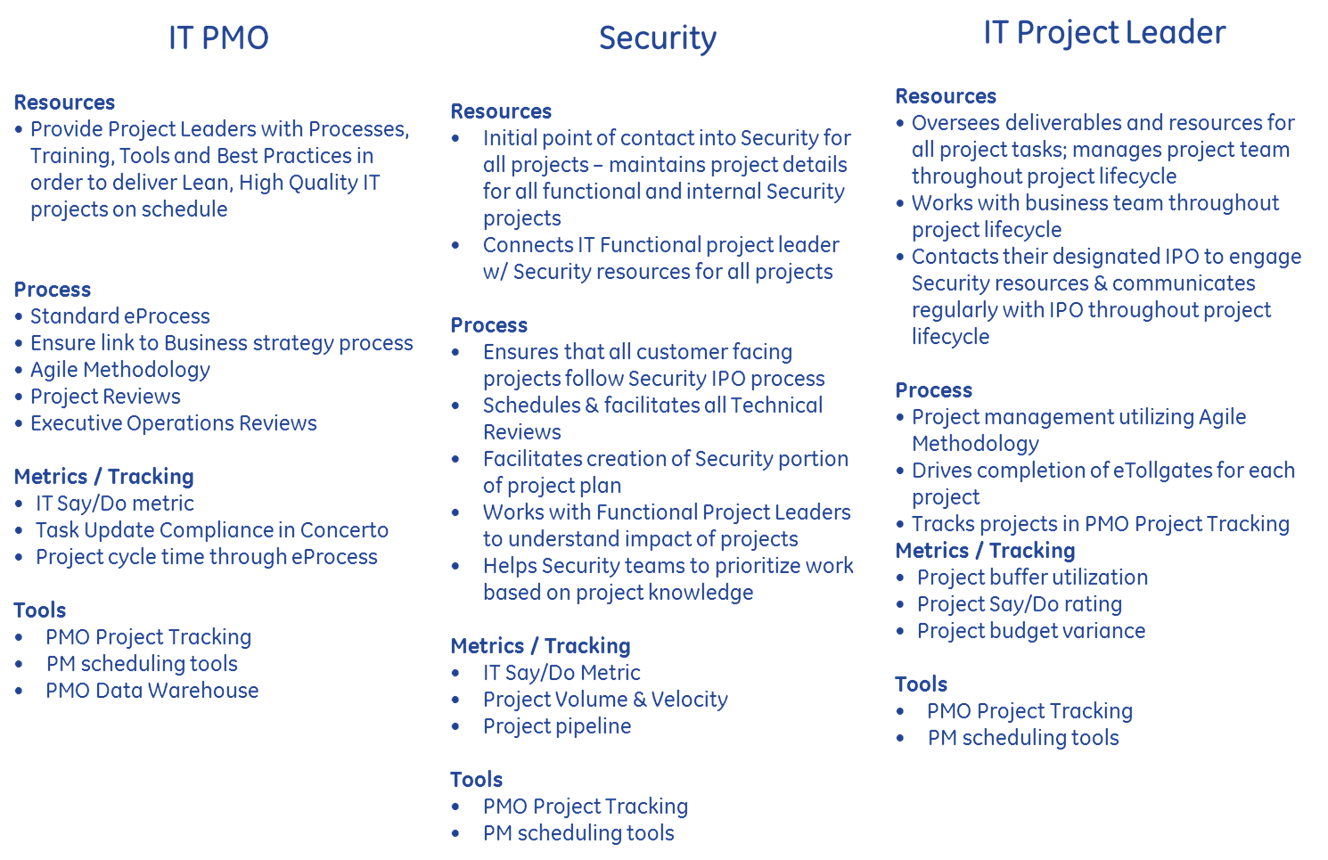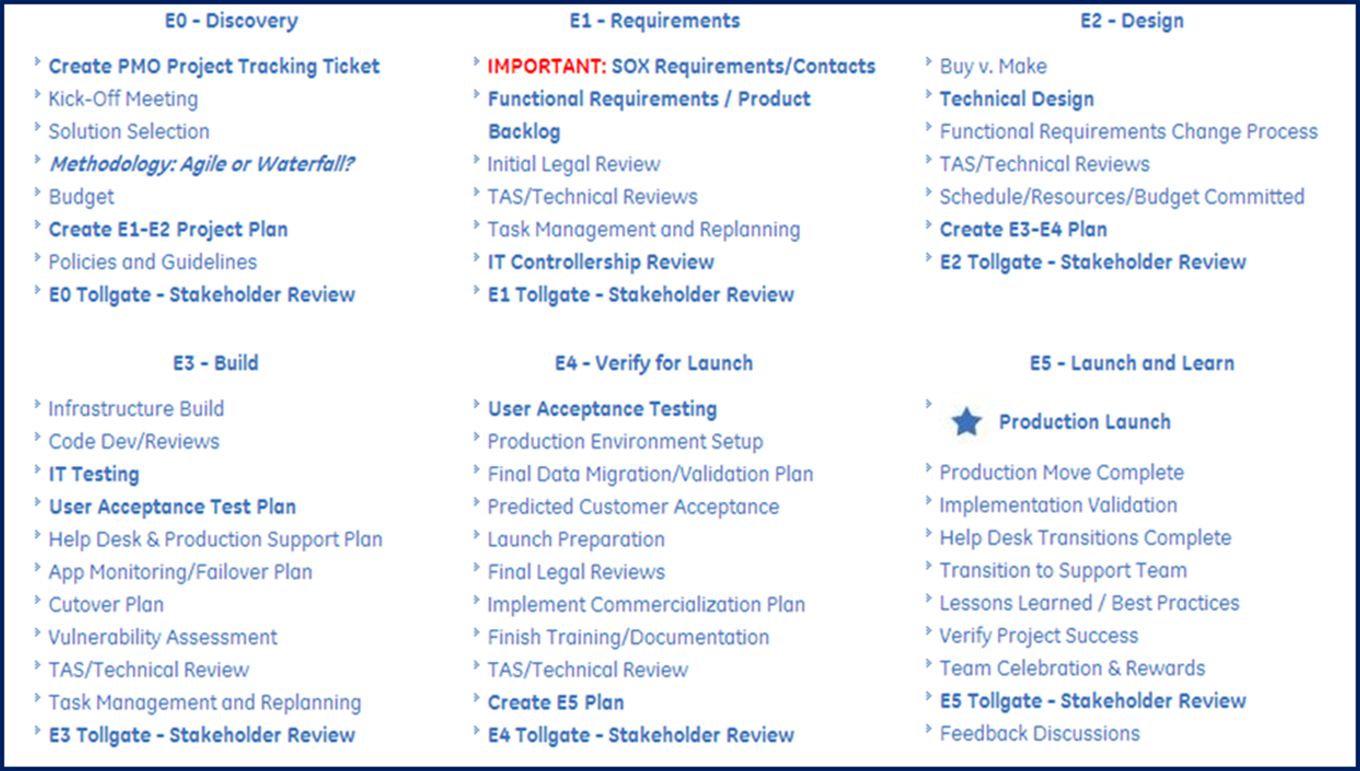Target ERP Implementation, Research Paper Example
Abstract
The Target Corporation has many divisions each of which work in conjunction to strive toward meeting the strategic goals and objectives of the organization as a whole. With the inherent difficulty with moving goods to thousands of retail locations, maintaining cost and ensuring quality, there is a need to have a robust, integrated and reliable information technology system. The focus on effectiveness and efficiency in the product lifecycle process is critical to developing the advantages necessary to compete on a global market. Enterprise Resource Planning (ERP) will provide the framework to deliver products to the consumer while also all to the utilization of process, system and communication efforts to create that competitive advantage. The ERP program implementation requires multiple changes to the business processes as well as the implementation of new software technology. To establish a complete project there must first be a plan. The project plan incorporates multiple areas including scope, pricing, cost control, quality management and risk mitigation to name a few. The project plan provides the basis for understanding for what the project is and is intended to provide at the conclusion of the project lifecycle (Dobson, 2004). It also provides a frame of reference during the project lifecycle for stakeholders to view and gain perspective on what the pure intentions of the project are.
Company and Project Strategy
The Target Corporation includes the primary corporation and multiple subsidiaries that include financial management, sourcing services, online operations and market branding. All of these entities play a vital role in achieving the strategic business model that is set forth by the leadership of the Target Corporation. Each entity targets different consumer aspects evolving into a complete cycle of consumerism. From the direct impact of sourcing foreign materials and goods to providing the financial leverage to the consumer to purchase the products, the Target Corporation has a corollary ownership in the entire business operation lifecycle. Target has been in operation since 1903 with the first retail location starting in 1963. Through this growth and business expansion many business processes and systems were created to handle the ever changing business model. Keeping up with the fluidity of business has driving many organizations to invest in technological advancements, infrastructure and expertise to handle the amount of business critical applications and capabilities to run a large organization. Through the drive of competition and the grasp on obtaining market share there are many opportunities that have arisen to align the business with consumer demands. Those demands are not only for the goods and services that Target provides but also how they obtain those goods and services. This includes managing the relationships between suppliers to ensure the retail outlets receive the goods and services on time, on target and in a financially favorable method.
Business Problems
Target has multiple legacy systems that are lacking the ability to communicate critical business information, maintain sustainable operations, or provide key data to make informed business decisions. The cost to support and maintain each system, including hardware and associated applications, is increasing as the products extend beyond their estimated lifecycle.
High Level Solution
The business model of Target Corporation revolves around logistics, sourcing and supply chain management and a centralized focus on distribution of products to their consumers. With many companies that sell products to consumers, it is the sales force that drives market strategy and determines the best tools to provide key data to their customers. This is due to the fact that the more sales that are generated the more production supply is needed to meet that demand. The unique situation is the dual marketing strategy of Target based upon their customer. It is also Target’s responsibility to drive demand by providing world class products at a valuable price point and to ensure the end consumer knows the quality of their products. With the changing marketing environment, consumers have the ability to shop from the luxury of their homes and gather key data prior to going to the actual brick-and-mortar locations to see the products in person. This is why Target needs to embrace not only their internal view of product quality but also present that information externally through the use of ecommerce and the technological advances that the ERP system will offer. The ERP system will provide the ability to synchronize the internal systems to ensure quality products to the consumer while also meeting their demand schedule and allowing the availability needed by end consumers to have the product on-demand and in the specifications they desire (Monk, & Wagner, 2009).
Benefits of Solution and Building a Competitive Advantage
The competitive advantage of using the internet to facility the web based applications, enhance marketing communication flow and provide information to not only the consumer but also the key decision makers within the chain of command provide a level of enhanced capability that is a differentiator in the retail, distribution and sourcing environments. The internet will continue to provide the ability to facilitate change through technological advancements. It is the conduit for communication and the faster and more reliable key decision makers can make decisions the faster the business can change and adapt to the variable business environment. The ERP system will provide key data points that would not be available in legacy systems. These key data points would shed light on previously masked areas of cost or inefficiency. With this implementation the ability to grow the business and adapt to consumer demands will be fortified by providing the key efficiencies in process and system integrations.
As in most projects the more credible the project regarding return on investment, solving compliance issues, reducing effort or benefiting the company in other tangible and intangible ways, the better off the project will be regarding stakeholder buy-in and support. The best projects regarding support and push from leadership are those projects that identify specific problems with measurable results. Monetary values are always an easy way to describe to leadership the value of a project. Monetary value comes from cost savings, freeing up budget constraints, reducing headcount or completing a process more efficiently and enjoying the cost avoidance of a prior labor intensive process. Implementation of an enterprise resource planning system results in the cost savings of a more efficient process, in which each system has the ability to communicate with one another. There are also areas for improvement and cost savings because building a new foundation utilizing the DFSS (Designed for Six Sigma) process allows future process improvements and monetary savings (Cooper, Grey, Raymond, and Walker, 2005). The benefits of ERP include real-time data transfer from one source of data. The ERP program works by eliminating legacy and antiquated systems that are disparate from the collaborative efforts the ERP program strives for (Magal, & Word, 2011).
Business Approach
In order to understand the scope and how the project will be implemented there needs to be a base of what is going to be a large scale implementation project (Prencipe, Davies, & Hobday 2007). ERP is an approach to remove unnecessary and wasteful business processes as well as sun-setting applications that are aging and become a hindrance on the business. The ERP system provides a continual package of applications and business processes built and purposed to complimentary and integrated.
The project life-cycle starts in the initiation phase where the scope is determined and sets the project on its progression towards completion. During the initiation phase the project stakeholders establish how the project will be measured and what success looks like (Project Management Institute, 2008). The scope being defined helps provide a baseline of how the project manager will execute the project and provide guidance throughout the project lifecycle. The potential for failure is ever present in any project but when the scope is poorly defined the exponential growth for the potential for failure increases. The largest potential for failure for the ERP project is not involving the right people at the right time and not including key business partners into the decision process.
With a system such as the ERP implementation, there are benefits that are derived from the implementation that include gains in proficiency and productivity (Monk & Wagner, 2009). With any program implementation there is the associated cost and it is important the type of investment required for a change to not only the information systems but also the business processes.
There are four areas that are going to be initially implicated by the implementation of the ERP project. This includes sourcing, logistics, finance and the suppliers. This includes all of the processes that are required to procure parts and material from a supplier to paying and building a product for the consumer. The scope of this project does not include the actions taken in some other parts of the business such as sourcing and branding finished goods, sales, legal or human resource functions. The scope of the project is clearly defined and the implementation will occur in geographical regions separated by reporting agencies and logical data separations. This plan is to be presented to leadership to create a culture of inclusion and present to the key leadership named in the project charter. These key business leaders will need to understand what results and deliverables they will receive at the end of their project as well as the associated costs. The project’s charter precedes the project plan and outlines the scope, business case, identifies stakeholders and provides the project manager the authorization to start working on the project. By gaining this authorization, the project manager could go out and build an estimate on the project.
Business Practices
The overall project will be broken down into functional project leaders and IT project leaders. They will also have integration with each function, security, the vendor and each area’s Center of Excellence where the subject matter experts will reside.

The project is broken down by Functional project leader and IT project leader. Each of these people has an indirect reporting responsibility to the ERP project leader to provide updates, roadblocks, progress and implementation updates. The functional leader is the representative for the operating unit and is the subject matter expert for that respective operating unit. It is his or her responsibility to provide the ERP leadership team with business needs, wants, as-is and to-be processes as well as insight into the business process for that function. An example of this would be a financial manager’s monthly closeout reconciliation. The current process involves manually adjusting the journal entries according to specific rules and logic that each line item must pass prior to uploading the data into the ledger. The to-be process would be to have the logic built into a user interface that would ensure each line item passed the logic provided by the SME.
The IT functional leader would manage the IT resources needed for hardware implementation, software implementation and upgrades as well as sourced IT support needed for programing and coding of functionality into the system. They would also provide current IT resources’ ability and tools available for the project and provide updates on current projects and projected change management plans according to business best practices afforded by senior leadership.
The center of excellence is a parlance and conglomeration between in-house and sourced professionals utilized to implement the ERP process. This includes but not limited to the ERP functional teams, sourced professional consultant, business writers, business analysts, program and project managers and other leadership resources available. Their roles are to provide input and guidance as well as provide the ability to remove roadblocks, provide way-ahead scenarios/answers and answer questions in the difficult project implementation
The roles of each section such as the IT PMO, security and the IT project leaders are defined below.

A re-organization will also need to occur in regard to the arrangement of team members. To facilitate the knowledge transfer and removing barriers to communication team representatives that will maintain a presence for the entirety of the project will be collocated with their project teams. The project manager, subject matter experts, logistics support and other members of the team will share open environment workspaces to enhance collaboration. Schedules will be posted with removable post-it notes defining key deliverables and their associated responsible party. Each section will be updated daily during the standing Scrum session and a report out on what was accomplished, what is going to be worked on and barriers to progress will be reported by each member. The Scrum master will address each issue and assign resources, priority or assignment if necessary.
Implementation
The project management method used for the ERP program is between the traditional waterfall project management methodology and the agile project management methodology. The graphs represent the typical methods in which the company goes through the toll-gates as wells as a graphical depiction of a “Total Project” look. Each method has the inherent positive and negative aspects regarding successful project management and each have their place in the ERP process. The business as a whole must adjust and redefine the typical Project Management methodology based upon the PMBOK (Project Management Book of Knowledge) while maintaining the tested values of the methodology.
The waterfall method follows the basic principle of Requirements, Design, Implementation, Validation and Maintenance. This allows movement from one phase to the next only when all of the requirements are met in the prior phase. The waterfall method spends a great deal of time gathering requirements and locks in the scope of the project from the very beginning. Agile project management on the other had revolved around iterations or sprints broken down into very specific measures of time which are typically two (2) week intervals. This method allows for a project to deliver to the business without fully knowing 100% of the program/projects requirements from the beginning. This method is very useful in the software development lifecycle and allows the project team to maintain flexibility on overall project delivery and cost but firm on time and sprint deliverables.
The agile project management methodology will be utilized in this project because of the inherent uncertainty of each sections initial requirements as well as the need to maintain an “agile” and flexible nature when accomplishing business needs. Below are examples of both methods and a description of what is needed at each review.
Each toll-gate is defined below:

As the visuals depict the agile method will deliver small increments of usable modules that will facilitate the acceptance and usability by the employees and stakeholders. The project management methodology will still maintain control criteria through the project tollgates as outlined but the sprint working sessions and stand up meetings will allow information to flow between teams easily.
The key to the project success is visibility by each team member. Each person will have a visual of the project time line, scope, budget and resources as well as direct contact with each key participant on the team to reduce the cycle time to resolution of key issue impacting the project. Key dependencies and impacts will be readily available to all team members to ensure all bases of the project are covered and the points of contact are informed when decisions are made. Problems and roadblocks will need to be raised as soon as possible to mitigate the impact the issues have on the overall project.
A project timeline describes the over-arching program with each section containing its own project timeline. This timeline was built with input from the various team and is tentative in nature only and shows the visual depiction of how the breakout could occur. Each module can be moved or extended depending on the needs of the business and available resources to perform the function.
Summary
ERP measurements can be hard to measure because ERP as a whole is a systematic approach to project/process implementation. The power behind ERP can be symbolized like that of the human brain. The brain is powerful and we know that but we cannot quite measure how powerful or efficient it is. We understand that the brain controls our movement, thoughts, memory, breathing, cell reproduction, heart beat and sensory functions. ERP is like that of the human brain. It is the central function that interprets different departments or functions across the business functions. It manages data while deciphering inputs and outputs into manageable and understandable methods. The first portion of project justification falls onto the shoulders of the cost/benefit analysis.
References
Cooper, D. F., Grey, S., Raymond, G., & Walker, P. (2005). Project risk management guidelines, managing risk in large projects and complex procurements. John Wiley & Sons.
Dobson, M. (2004). The triple constraints in project management. Vienna, VA: ManagementConcepts.
Magal, S. R., & Word, J. (2011). Integrated business processes with erp systems. RRD/Jefferson City: Wiley.
Monk, E., & Wagner, B. (2009). Concepts in enterprise resource planning. (3 ed.). Boston, MA: Course Technology Cengage Learning.
Prencipe, A., Davies, A., & Hobday, M. (2007). The business of systems integration. Oxford University Press, USA.
Project Management Institute, P. M. (2008). A guide to the project management body of knowledge. (4th ed.). Newtown Square: Project Management Inst.

Time is precious
don’t waste it!

Plagiarism-free
guarantee

Privacy
guarantee

Secure
checkout

Money back
guarantee






